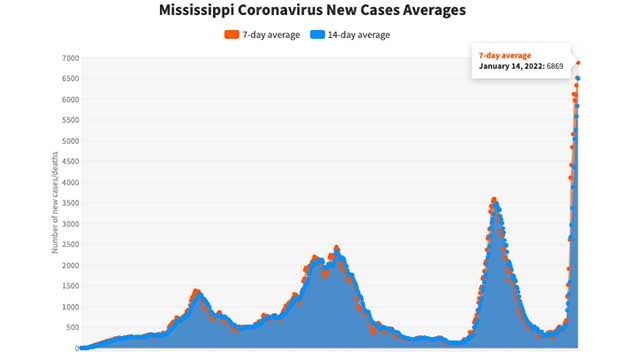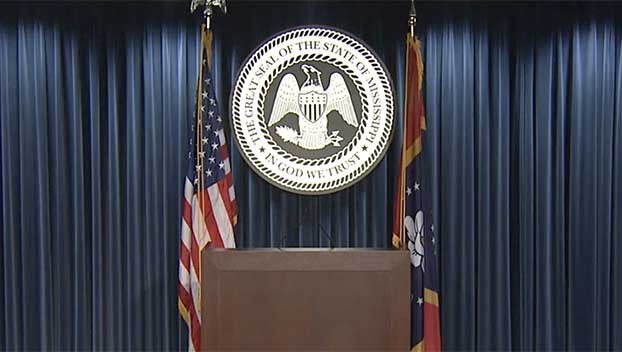Without women, some of Mississippi’s earliest newspapers wouldn’t have survived
Published 10:19 am Thursday, March 8, 2018
Of all of Mississippi’s most famous ghost stories and urban legends, the Witch of Yazoo is undoubtedly my favorite. The witch’s grave, still guarded by chain links at Glenwood Cemetery in Yazoo City, allegedly serves as the resting place of an evil woman said to have cursed the town the day she died, which was 20 years to the day before a fire all but destroyed the city.
There are a few theories regarding the origin of the legend and who might have inspired its invention, my favorite being that the Witch of Yazoo wasn’t so much a witch as she was a newspaper editor—one of the first female newspaper editors/owners in the country, in fact, and certainly the first in Mississippi.
Harriet Prewitt stumbled into the news business one of the only ways a woman could back in the early 1800s. By default. When her husband died in 1848, she not only became a widow and single mother of three children but assumed the role of “editor, proprietor, news editor, bookkeeper and mailing clerk” of the Yazoo City Whig, later renamed the Banner.

This Valentine’s Day “offer,” published by The Clarion-Ledger in 1895, urged women in Jackson to run the paper for a day.
A woman running a newspaper was an exception to the rule of what was deemed “womanly work” in those days, but for a woman to run a political paper was unheard of. It gave Prewitt’s voice a firm platform on which to stand, yielding bold editorials that often enraged political opponents and even journalists who dodged debating her arguments by reducing her to a “woman forgetting her place and trying to play editor,” according to the Detroit Free Press in an 1889 column praising Prewitt’s work.
Her response to petty criticism was constructed with “forcible argument, splendid silence or effective sarcasm that was never forgotten,” a description I pray to God is somewhere in my obituary.
An overlooked detail about Prewitt’s time at the paper is how financially successful it was under her leadership, helping her secure its spot among the top political papers in the state while allowing her to single-handedly provide for her family.
 The same year Prewitt died, another Mississippi woman was thrust into the same position. Elizabeth Thompson’s reign as editor and owner of The Oxford Eagle began on May 8, 1883, reported a week later in a story with Eliza’s byline: “Mr. S.M. Thompson, editor of the Oxford Eagle, was shot and killed by Chas. Butler.”
The same year Prewitt died, another Mississippi woman was thrust into the same position. Elizabeth Thompson’s reign as editor and owner of The Oxford Eagle began on May 8, 1883, reported a week later in a story with Eliza’s byline: “Mr. S.M. Thompson, editor of the Oxford Eagle, was shot and killed by Chas. Butler.”
Samuel Moore Thompson, Eliza’s husband and father to their teenage daughter, launched the Eagle in 1877 as a rival to the Oxford Falcon, which he had edited for several years. He died on the Square in broad daylight, drunk and belligerent and defiantly resisting arrest when Charles Butler shot a bullet through his heart.
The Eagle, in relative infancy, could have died that day too. Instead, Eliza took over at a time when only two other women in the state were running newspapers and remained at the helm of the Eagle’s editorial and financial success for more than three decades.

Hazel Brannon Smith
Several Mississippi women followed suit throughout the first half of the 20th century, needlessly referred to by fellow journalists as “lady editors” for decades despite their achievements, as was the case with Pulitzer Prize-winning “lady editor” Hazel Brannon Smith.
When I arrived at The Oxford Eagle in 2016, it was the first time in my career it wasn’t notable to see a woman in leadership, thanks to the late, legendary Nina Goolsby, editor and co-owner of the Eagle from 1961 to 2006, who was in a category all her own.
Goolsby was instrumental in serving and shaping Lafayette County and the paper’s role as a service-driven local news outlet. The Eagle evolved from simply a retelling of events to a platform for fostering connection and community.
 How interesting it is, then, to be a woman working in Mississippi journalism in 2018, at a time when only a small handful of women are running the state’s daily newspapers.
How interesting it is, then, to be a woman working in Mississippi journalism in 2018, at a time when only a small handful of women are running the state’s daily newspapers.
We are no longer relegated to our gender being part of our job title or organized in a separate press association designated for women, and yet it seems there were far more “lady editors” 60 years ago than there are editors in 2017 who are also women.
It’s discouraging for many reasons, especially when considering the struggle and sacrifice of so many brave women who came before us and not only kept these papers afloat but made them editorially and financially successful.
While women in journalism still face uniquely frustrating challenges, I can’t help thinking if those women achieved that much during a time when the world was against them, just imagine what we can accomplish today in similar positions of leadership.
Women have never been minor characters in the story of Mississippi journalism. They’ve helped define it.
There’s no sense in stopping now.
Editor’s Note: This was originally published in November 2017. We’re revisiting it today in honor of International Women’s Day.





